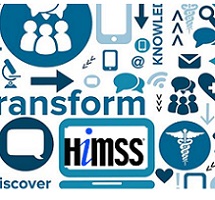 The conversion of the healthcare industry from a fee-for-service model to one of value-based care is well on its way. In January of this year, HHS Secretary Sylvia Burwell set two targets for Medicare by 2018:
The conversion of the healthcare industry from a fee-for-service model to one of value-based care is well on its way. In January of this year, HHS Secretary Sylvia Burwell set two targets for Medicare by 2018:
- 50% of fee-for-service payments should be in value-based medicine reimbursement models, and 90% of these payments be aligned to quality improvement efforts.
In April as we were attending HIMSS 15 in Chicago, Congress and President Obama approved the so-called “doc fix” bill, repealing the Medicare Part B Sustainable Growth Rate (SGR) reimbursement formula and replacing it with a new pay-for-performance program: the Merit-Based Incentive Payment System or MIPS. MIPS consolidates parts of the Physician Quality Reporting System (PQRS), the Value Based Modifier (VBM) Payment program, and the Medicare EHR incentive program (meaningful use) into one single program. Download this white paper by our own Jim Tate for an overview of the MIPS program.
It is no surprise that this momentous shift to value-based care is reflected in the HIMSS 16 conference programming. HIMSS 16 (#HIMSS16) will be held at the Sands Expo in Las Vegas from February 29 – March 4. We combed the HIMSS 16 conference site and found a number of great sessions addressing this shift and its impact on providers. Here’s a rundown:
Pre-Conference Symposia:
What: Improving Quality in a Payment for Value World
When: Monday, February 29th 2016 8:15a – 4:15p
Where: Bellini 2104
Speakers: Various
The Medicare Access and CHIP Reauthorization ACT escalates CMS’ efforts to move the traditional fee for service reimbursement models to a payment for value. This symposium shares the CMS roadmap to payment for value, identifying strategies for overcoming provider and hospital reporting barriers, and improving care quality using clinical data.
What: Making Payment for Value Work – HIMSS Recommendations
When: Monday, February 29, 2016 3:15 pm
Speakers: Shelley Digiacomo and Pauline M. Byom
Core to the HIMSS mission is promoting the use of health IT to improve the quality of healthcare delivery while ensuring that data collection is not an overly burdensome part of a workflow. Members of the HIMSS Quality, Cost, and Safety Committees will share recommendations for quality reporting and performance requirements for a Merit-Based Incentive Payment System.
Education Sessions:
What: Value-Based Models: Two Successful Payer-Provider Approaches
When: Tuesday March 1, 2016 11:30a – 12:30p PT
Where: Delfino 4004
Speakers: Mark Stauder, Clifford T. Fullerton
While value-based models promise a more sustainable future, it can be a challenge for providers to choose the one best suited to their unique goals. In this session, executives from two health systems discuss why and how they collaborated with a payer. Learn how they leveraged IT to manage risk and attack cost and quality issues in two different models: an accountable care organization and a joint venture health plan.
What: A Roadmap for Modernizing the Healthcare Revenue Cycle
When: Tuesday March 1, 2016 2:20p-3:30p PT
Where: Delfino 4004
Speakers: Timothy Panks, Doug Hires
The economics of value-based care are forcing healthcare executives to choose between investing in clinical excellence and administrative technology. But revenue cycle leaders are considering new strategic alternatives that allow them to utilize the latest technology at a lower cost.
What: Volume-Based to Value-Based Care at a Pioneer ACO
When: Thursday March 3, 2016 2:30-3:30p PT
Where: Palazzo 1
Speakers: Julie Reisetter, Manu Varma
Changes in payment approaches require providers to lower costs and improve outcomes at the same time. Telehealth-enabled clinical programs offer an opportunity to achieve both goals. In this session, Banner Health will provide insights to their strategies for using telehealth-based care models in both the inpatient and ambulatory settings to improve outcomes and lower costs, preparing their systems for the new landscape of healthcare.
